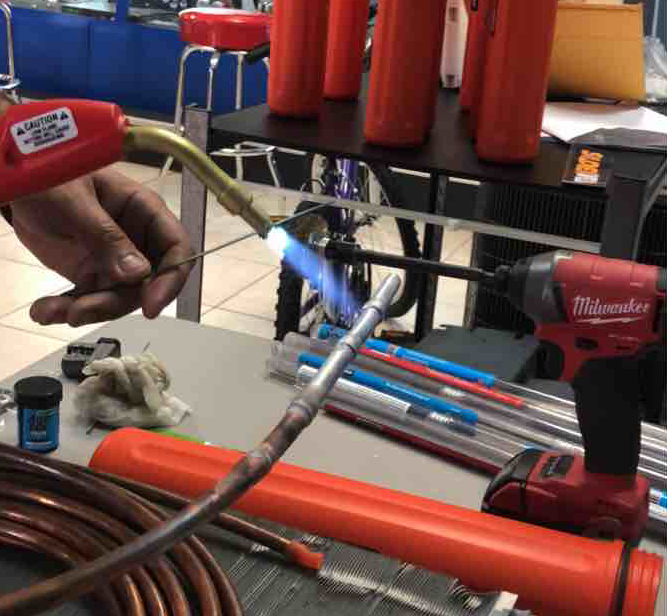Get Tech Tips
Subscribe to free tech tips.
How “Hot” Does That Get?

I got in one of these tiny torches the other day to experiment with brazing aluminum in tight spots, and one of the techs walked in and asked, “What type of torch is that?”
I answered, “It's oxy/acetylene.”
He picked it up and looked at it a bit, then asked, “Does that get hot enough to braze copper?”
It's actually a tricky question to answer simply.
When we ask if something gets “hot enough,” we often mean to ask if the TEMPERATURE is high enough to melt solder or a brazing rod. However, heat is both an intensity (temperature) and a quantity (BTUs). So, while this tiny torch is certainly high enough temperature to melt a rod, it may or may not contain enough BTUs to heat the base metal being joined.
The temperature of the flame is primarily dictated by the fuel or fuels being burned and the oxygen mixture. The BTU quantity depends on the pressure being used and the size/type of the tip.
Most torch manufacturers will list the (copper) pipe size that the tip is rated for and the proper oxygen and acetylene pressures for the task.
So, heat is both a quantity (BTU) and an intensity (temperature), and when we say how hot or how cold, it really depends on what you mean. But to answer the question—yes, you can braze copper with the tiny torch, so long as it is small tubing.
—Bryan










Comments
To leave a comment, you need to log in.
Log In